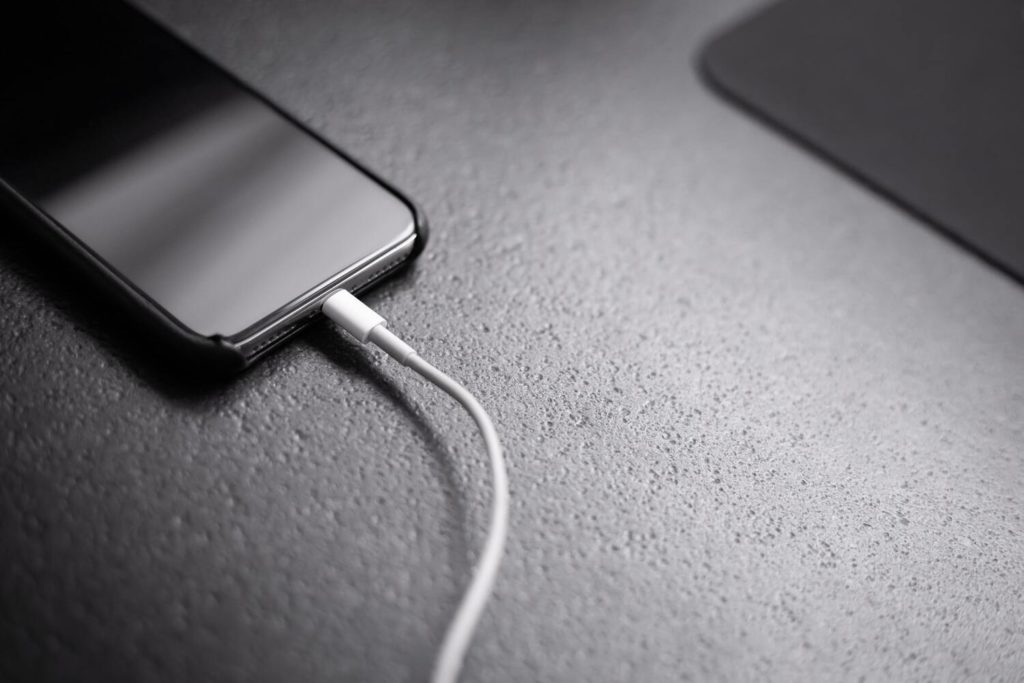Fast chargers can be a very complicated world of their own. In this article, we give a solid explanation about technology behind fast charging, how does fast charging work and what are the best options currently available in the market.
There are loads of different types of chargers available out there. Some come out of the box with the phone, while others are imitations. Some are branded, and some are not. But even those which are genuine won’t charge the same phones at the same speed. If this doesn’t sound surprising, then the following will: the fastest charger in the planet for one particular device could be extremely slow for another. How is this possible?
Back to Basics: Ohm’s Law and Power Law
To fully understand the technology behind fast charging, it is important to first take a look at the main principle behind it. This is no other than Ohm’s Law, in its power law variant:
P = I × V
This equation shows that Power is the product of Current and Voltage. Power (usually measured in Watts, or W) can be thought of as the rate at which energy is transferred. In fact, all a fast charger does is to employ a higher Wattage (Power) than traditional chargers, thus transferring energy at a higher speed.

Your phone could be the biggest bottleneck
Although the principle is to charge at a higher Wattage, it is unfortunately not always as simple as that. High levels of voltage or current can damage your device, which is why most phones’ inbuilt charge controller chip prevents them from drawing more power than a certain limit (generally by limiting the input current).
The amount of input current is usually dictated by the USB standard used by your device: USB 2.0 is limited by default to a maximum of 0.5A at 5V (2.5W), and USB 3.0 to 0.9A at 5V (4.5W). These are really slow speeds when compared to the 20W-50W that some the more modern quick chargers can achieve. Everything changed with the arrival of USB 3.1, capable of delivering up to 5A at 20V (up to 100W), thus enabling the technology behind modern fast chargers. However, not all phone manufacturers chose to follow the same path, making radically different technology design choices to power their fast chargers.
The best fast charging technologies, explained
Qualcomm Quick Charge
Qualcomm Quick Charge is probably the most popular and widely used standard accross the industry. It is able to deliver high wattages by using higher voltages (up to 20V) than the industry average (5V). Qualcomm achieves this by using built-in safety features in their Snapdragon chip which prevent overheating and short-circuiting.

Many other phone manufacturer’s fast charging technologies are actually based on Qualcomm’s Quick Charge. This is the case of Motorola TurboPower (up to 28.5W), Samsung Adaptive Fast Charging (25W), and Huawei SuperCharge (40W).
Perhaps the best part about Qualcomm Quich Charge is that, in general, you can use any Quick Charge compatible charger with any compatible device. This, together with the fact that Quick Charge is the most widely available standard in the market, means that, if you need to borrow someone else’s charger, chances are that it will also be Quick Charge compatible. There are multiple 3rd party vendors than also sell Quick Charge compatible chargers for very decent prices.
Oppo VOOC and OnePlus Dash/Warp Charge
Ever since the inclusion of Dash Charge back in 2016 in the OnePlus 3, OnePlus has emerged as one of the key players in the fast charger industry. Dash charge was able to reach Wattages of 20W, something impressive back then. The brand new Warp Charge, launched in 2019 and included in the new Oneplus 7 Pro and Oneplus 7T, achieves 30W.

Based on Oppo’s VOOC (Voltage Open Multi-Step Constant-Current Charging) technology, the OnePlus Dash/Warp charge is able to achieve high wattages by focusing on delivering high current, instead of high voltage like Qualcomm Quick Charge. The main advantage of this method is that it avoids the battery overheating problems present in Qualcomm Quick Charge, since it performs all of the voltage and current transformations within the charger itself, instead of within the phone’s microchip.
The only disadvantage of VOOC/Dash/Warp Charge is that, being a highly propietary technology, it only works original branded accessories. The good news, however, is that all new OnePlus smartphones come with a Dash/Warp Charger included inside the box. This is not true in many other cases, for example the iPhone.
But the most impressive numbers belong to Oppo SuperVOOC, capable of achieving a staggering 65W in it’s 2.0 version (available in the new Oppo Find X2).
In April 2020, OnePlus released a wireless charger capable of achieving 30W when paired up with the new OnePlus 8 Pro. This means that OnePlus has now under its lap the fastest wireless charger in the market.
USB Power Delivery (USB-PD)
USB-PD is perhaps the newest fast charging standard of all. Developed by the USB Implementers Forum, the creators of the original USB standard, USB-PD is capable of delivering up to 100W, mostly by bumping up the voltage (up to 20V). However, in reality these numbers are reserved for notebook computers and laptops. Smartphones cannot take that much input voltage, and thus are generally limited to lower voltages, resulting in maximums of around 30W when using USB-PD.
Apple iPhone
Perhaps the most well-known device in the list, the iPhone has been compatible with USB-PD ever since the launch of the iPhone 8 (2017). In practice, this means that you can use any third-party USB-PD compatible charger to achieve fast charging speeds on your iPhone, and not necessarily by using an Apple original charger. The only caveat is that you wil probably need to use a USB-C to Lightning adapter, but again, it can be highly beneficial, as Apple’s standard charger (the one that comes out of the box with your new iPhone) only charges at 5W.

With the launch of the new iPhone 11 Pro and 11 Pro Max, Apple started including a 18W USB-C Power Adapter. However, the iPhone 11 (and all older versions) still only include the standard 5W charger.
Google Pixel
All Google Pixel phones (starting from the Pixel 3a) are compatible with USB-PD, limited to a maximum of 18W. Luckily, Google does include a 18W with their phones, meaning that there is no need to shop around for a suitable third-party fast charger.
How does fast charging work?
Now we have a better understanding about how fast charging technology works, and the different standards used in the industry. The table below summarizes the main characteristics, specs, pros and cons of each method.
| Brand | Fast Charging Standard | Max Power | Devices Available | Compatible Chargers | Comments |
|---|---|---|---|---|---|
| Motorola | Qualcomm Quick Charge | 28.5W | Moto Z family | 28.5W | |
| Samsung | Qualcomm Quick Charge | 25W | Samsung Galaxy S20 family | 25W | |
| Huawei | Qualcomm Quick Charge and USB-PD | 40W | Mostly all Huawei Phones | 40W | Original charge only provides 27W! |
| OnePlus | VOOC | 30W | Oneplus 7 Pro OnePlus 7T OnePlus 7T Pro | 30W | Dash/Warp charger included |
| Oppo | VOOC | 65W | 65W | ||
| Apple | USB-PD | 22W | iPhone 8 and newer | 22W | Original charger only provides 5W! |
| USB-PD | 18W | Pixel 3a and newer | 18W | 18W charger included |
Conclusion
While most flagship phones nowadays market their fast charging technology as the quickest in the market, the truth is that there are a lot of different angles to view fast charging from, and there is no clear winner technology as of today. USB-PD will probably become a more widely adopted standard over the next few years. However, Qualcomm will likely maintain their market share due to their dominance in the SoC industry, and Oppo/OnePlus will probably continue to bring the latest cutting-edge technologies to their ultra-fast VOOC/Dash/Warp Charge. In any case, hopefully by now you have a better understanding about how does fast charging work, and all the pros and cons associated.

